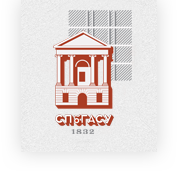Research on Optimization of Logistics Ordering and Crowdsourcing Delivery Models in the Digital Context: A Case Study of Dingdong Maicai Fresh Food Platform
DOI:
https://doi.org/10.63313/EBM.2012Keywords:
Digital Logistics, Fresh Product Platforms, Crowdsourced Delivery, Supply Chain Optimization, Dingdong MaicaiAbstract
Fresh products are characterized by perishability, seasonality, and susceptibility to spoilage, making them highly sensitive to time and environmental factors, which often leads to safety risks during circulation. Although distribution models centered around chain supermarkets have flourished in China, significant safety concerns persist. At present, the transportation and delivery of fresh foods in China primarily rely on room-temperature logistics, resulting in substantial product losses during these processes. Therefore, key issues include how to reduce spoilage rates in logistics and distribution, ensure product freshness, and explore methods to optimize logistics ordering and crowdsourced delivery models. This study focuses on the logistics and distribution models of fresh products, taking Dingdong Maicai as a case study. By analyzing its current logistics framework and leveraging digital technologies such as big data, smart logistics, and artificial intelligence, the research aims to enhance supply chain efficiency, refine crowdsourced delivery systems, and propose practical recommendations and optimization strategies for its logistics model.
References
[1] Zhao Hongmei. Distribution Models and Implementation Strategies for Rural and Town-ship Agricultural Product Logistics in the E-commerce Environment [J]. Research on Commercial Economy, 2016, (10): 151-153.
[2] Li Li. Optimization Countermeasures for Fresh Agricultural Product Logistics Models in the E-commerce Environment [J]. Research on Commercial Economy, 2017, (19): 140-142.
[3] Chen Letian. Research on the Optimization of Fresh Agricultural Product Logistics Models in the E-commerce Environment [J]. Price Monthly, 2015, (10): 76-79.
[4] Li Xiao. Research on the Optimization of E-commerce Distribution of Fresh Agricultural Products Based on Big Data [J]. Rural Economy, 2018, (6): 112-115.
[5] Chen Gang. Fresh Agricultural Product Intra-city Distribution Models and Optimization Strategies Based on Online and Offline [J]. Research on Commercial Economy, 2017, (6): 88-89.
[6] Bortolini M, Faccio M, Ferrari E, et al. Fresh food sustainable distribution: cost, delivery time and carbon footprint three-objective optimization [J]. Journal of Food Engineering, 2016, 174(85): 56-67.
[7] Faccio M, Ferrari E, Persona A, et al. Lean distribution principles to food logistics: a prod-uct category approach [J]. International Journal of Operational Research, 2013, 16(2): 214-240.
[8] Hsu CI, Liu KP. A model for facilities planning for multi-temperature joint distribution sys-tem [J]. Food Control, 2011, 22(12): 1873-1882.
[9] Kuo JC, Chen MC. Developing an advanced Multi-Temperature Joint Distribution System for the food cold chain [J]. Food Control, 2010, 21(4): 559-566.
[10] Ahumada O, Villalobos JR, Mason AN. Tactical planning of the production and distribution of fresh agricultural products under uncertainty [J]. Agricultural Systems, 2012, 112: 17-26.
[11] Zhong AW, Yan W. Development of Agricultural Product Logistics from the Perspective of the 4PL [J]. Asian Agricultural Research, 2013, 5(11): 14-17.
[12] [12] Sheu JB. A hybrid fuzzy-optimization approach to customer-grouping-based logistics distribution operations [J]. Applied Mathematical Modelling, 2007, 31(6): 1048-1066.
[13] Gao Hui. On MissFresh: Defining a New Model for Fresh E-commerce [J]. Modern Eco-nomic Information, 2018, (20): 312.
[14] Lv Xiaoyong. Research on the Operation Models of Fresh Agricultural Product E-commerce [J]. Forum on Industry and Technology, 2017, (9): 16-17.
[15] Von Briel F. The future of omnichannel retail: A four-stage Delphi study [J]. Technological Forecasting & Social Change, 2018, 132: 217-229.
[16] Chopra S. The Evolution of Omni-Channel Retailing and its Impact on Supply Chains [J]. Transportation Research Procedia, 2018, 30: 4-13.
[17] Gallino S, Moreno A. Integration of Online and Offline Channels in Retail: The Impact of Sharing Reliable Inventory Availability Information [J]. Management Science, 2014, 60(6): 1434-1451.
[18] Taylor DH, Fearne A. Demand management in fresh food value chains: a framework for analysis and improvement [J]. Supply Chain Management: An International Journal, 2009, 14(5): 379-392.
[19] Jedermann R, Nicometo M, Uysal I, et al. Reducing food losses by intelligent food logistics [J]. Philosophical Transactions of the Royal Society, 2014, 372.
[20] Fan Yu. Improvement and Innovation of Fresh New Retail Models from the Consumer Perspective [J]. China International Finance (Bilingual), 2018, (8): 20-21.
[21] Gao Jian, Liu Song. Construction of Innovative Logistics and Transportation Models for Ag-ricultural Products under the Background of New Retail [J]. Research on Commercial Economy, 2019, (8): 106-108.
[22] Zhang Shenhong, Wang Jing. Urban and Rural Distribution Models and Optimization of Fresh Agricultural Products under the New Retail Pattern [J]. China Logistics and Purchas-ing, 2018, (17): 78-79.
[23] Ge Wei, Yi Lei, Zhong Limengtao. Fresh Distribution Strategies under the Background of "New Retail" [J]. Western Leather, 2018, 40(12): 115, 117. Wu Yongyi. New Retail: The Battle for Store-Warehouse Integration and Forward Micro-Warehouses [J]. Enterprise Management, 2018, (12): 88-90.
[24] Gao Hui. On MissFresh: Defining a New Model for Fresh E-commerce [J]. Modern Eco-nomic Information, 2018, (20): 312.
[25] Wang Baoyi. The Nature, Causes, and Practical Trends of "New Retail" [J]. China Circulation Economy, 2017, 31(7): 5-13.
[26] Yan Zhanghua, Liu Lei. The Concept, Research Framework, and Development Trends of "New Retail" [J]. China Circulation Economy, 2017, 31(10): 14-21.
[27] Zhao Shumei, Xu Xiaohong. The Meaning, Models, and Development Paths of "New Retail" [J]. China Circulation Economy, 2017, 31(5): 14-22.
[28] Lv Xiaoyong. Research on the Operation Models of Fresh Agricultural Product E-commerce [J]. Forum on Industry and Technology, 2017, (9): 16-17.
[29] Pei Yanhua. Research on the Location of Fresh Agricultural Product Cold Chain Distribu-tion Centers Based on Demand Forecasting [D]. Chongqing Technology and Business Uni-versity, 2016.
[30] Kayacan E, Ulutas B, Kaynak O. Grey system theory-based models in time series prediction [J]. Expert Systems with Applications, 2010, 37(2): 1784-1789.
[31] Drezner Z, Scott CH. Location of a distribution center for a perishable product [J]. Mathe-matical Methods of Operations Research, 2013, (3): 301-314.
[32] Govindan K, Jafarian A, Khodaverdi R, et al. Two-echelon multiple-vehicle location–routing problem with time windows for optimization of sustainable supply chain network of per-ishable food [J]. International Journal of Production Economics, 2013, 152: 9-28.
Downloads
Published
Issue
Section
License
Copyright (c) 2025 by author(s) and Erytis Publishing Limited.

This work is licensed under a Creative Commons Attribution-ShareAlike 4.0 International License.















